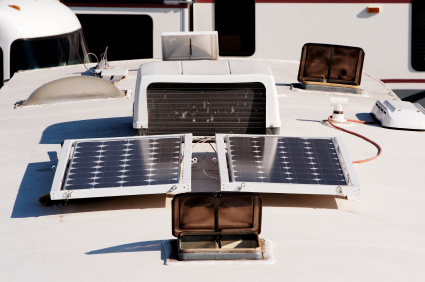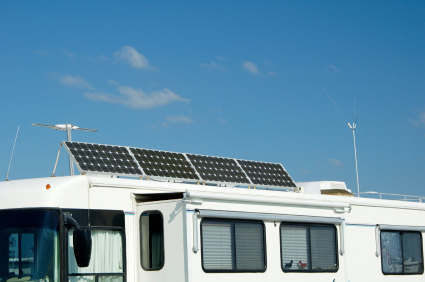Solar Panels for RVs: Racking Solutions
If you love your RV enough to install solar panels on it, you probably know that there is nothing more valuable in an RV than wisely used space. This applies just as much to the outside of the RV as to the inside. Just as there are different solutions for the kind and size of solar panels you use for your RV energy needs, so there are some choices in the mounting solutions that you have.
This SolarTown Learning Article summarizes the pros and cons of the three most common solar mounting options available to the dedicated boondocker. The three approaches to racking solutions for recreational vehicles are flat mounting; tilted mounting; and portable modules.
Flat mounting is the simplest solution
The simplest form of RV solar panel mounting is to mount the solar panel flat on the roof of your vehicle. You can use this approach for both thin film solar panels and crystalline solar panels. Some thin film module manufacturers have a self-adhesive backing on the back of the panels so that you can apply them directly to most surfaces, although you need to check with the manufacturer specifications to make sure that the surface of your RV is a proper surface for thin film modules.
This installation is the simplest and most hands off installation, but it isn't usually the most efficient use of space. These are some of the pros and cons for mounting solar panels flat on the roof of your RV.
Pros
- No need to adjust or rotate the solar modules
- No need to consider the angle of the vehicle when parked
- Provides continuous power, even when driving
- Less racking hardware required
- Faster installation
Cons
- Gets dirty easily, especially when left stationary
- Gets hotter than other mounting options, causing some power fluctuation
- Sub-optimal angle to the sun, resulting in lower power production
- Must park in the sun to be effective
Related article: Solar Panels: Thin Film or Crystalline
Tilted mounting systems will provide more output but require more hassle
Tilted mounting, sometimes called angled mounting, allows solar panels to be tilted at an angle from the roof of the RV so that the panels are more directly facing the sun. However, most solar panels will break from the force of the wind if left in this position while driving, so tilted mounting racks are designed to be able to return to a flat mounted position.
Pros
- Up to 35% more efficient power production than flat mounting
- Heat dissipates more easily, causing less power fluctuation
- Easier to keep clean
Cons
- Can break if not put down before driving
- Most must be lowered manually, meaning a trip to the top of the RV before every drive
- Can't be used in high wind, and may be damaged by unexpected wind gusts
- Will raise the vehicle's profile
- Must park in the sun to be effective
- More racking hardware required
Portable modules can be utilized when the RV is not moving
While not strictly a "mounting" option, using portable solar modules is an effective option for RV travel, so long as the equipment for properly connecting the modules to your battery setup has been installed.
Pros
- Can be positioned at the most optimal angle to the sun for optimal efficiency
- Can be set up in the sun, while the RV is parked in the shade
- Little heat buildup, resulting in low power fluctuation
- Can be cleaned and set up without ever visiting the roof
- Has the potential for larger solar arrays than could be mounted on the vehicle
Cons
- Must be set up and torn down whenever the RV is moved
- Must be stored, taking up valuable interior space
- Provides no power while driving
- Higher risk of accidental damage or vandalization by others
- Cables can be unsightly
- More racking hardware required
- Site prep and installation more intensive
Different mounting solutions suit different needs
Which mounting solution is right for you is depends on how you use your RV. If you plan on frequently traveling in the vehicle, then the simplicity of a set-up and tear-down free configuration might recommend flat mounting. If you plan on staying in one place for extended periods of time, you should consider the higher efficiency tilted configuration. If staying cool is a high priority and you plan on using your air conditioner frequently, then a portable system that allows you to park your vehicle in the shade might save you far more energy than the system itself generates.
Whatever you choose, just remember that mounting solar panels to your RV can be just as important to performance as how much capacity your solar array has.
